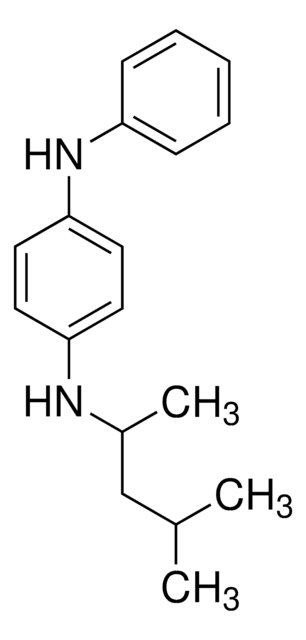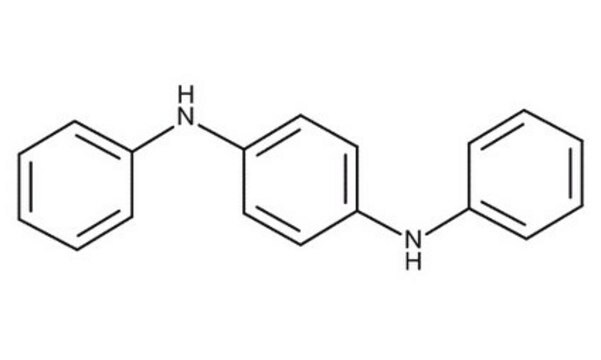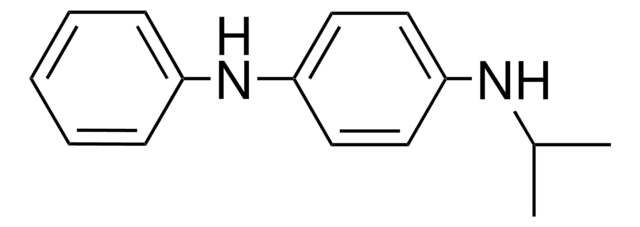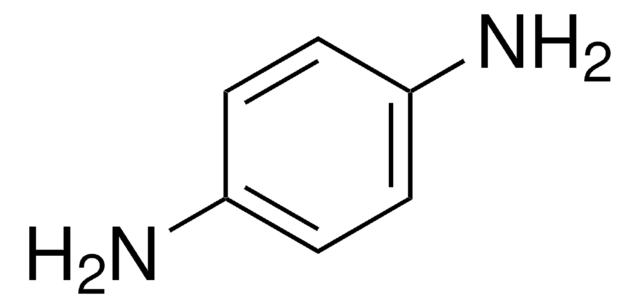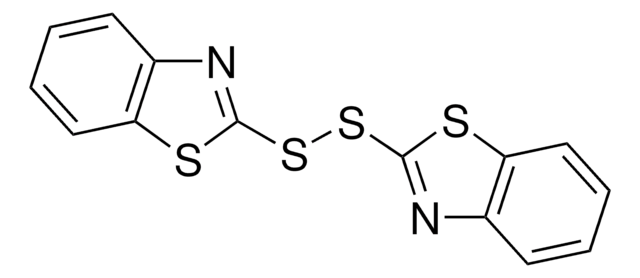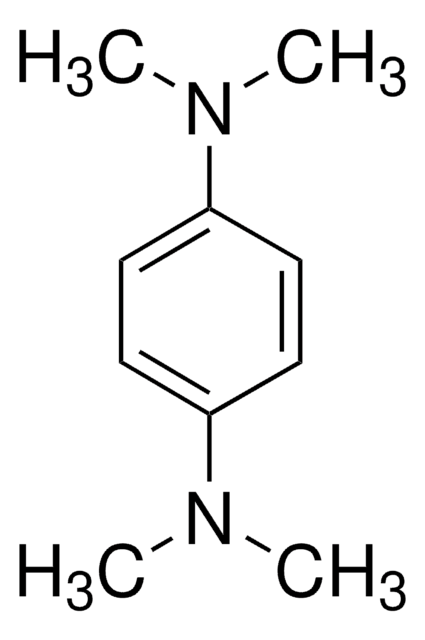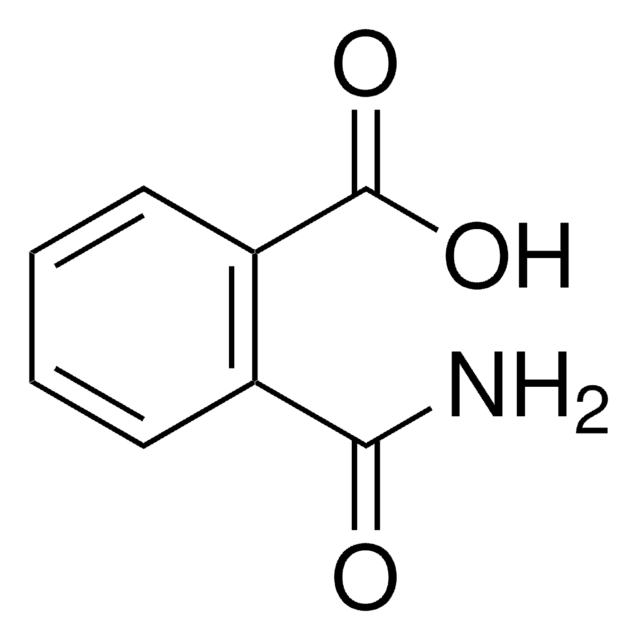292265
N,N′-Diphenyl-p-phenylenediamine
98%
Synonim(y):
N,N′-Diphenyl-1,4-phenylenediamine
About This Item
Polecane produkty
Poziom jakości
Próba
98%
tw
220-225 °C/0.5 mmHg (lit.)
mp
143-145 °C (lit.)
ciąg SMILES
N(c1ccccc1)c2ccc(Nc3ccccc3)cc2
InChI
1S/C18H16N2/c1-3-7-15(8-4-1)19-17-11-13-18(14-12-17)20-16-9-5-2-6-10-16/h1-14,19-20H
Klucz InChI
UTGQNNCQYDRXCH-UHFFFAOYSA-N
Szukasz podobnych produktów? Odwiedź Przewodnik dotyczący porównywania produktów
Powiązane kategorie
Zastosowanie
- TPA-induced inhibition of gap junctional intercellular communication is not mediated through free radicals.: This research explores the role of N,N′-Diphenyl-p-phenylenediamine (DPPD) in cellular communication, providing insights into its applications in high-performance rubber stabilizers and life science manufacturing chemicals. (Hasler et al., 1990).
Hasło ostrzegawcze
Warning
Zwroty wskazujące rodzaj zagrożenia
Zwroty wskazujące środki ostrożności
Klasyfikacja zagrożeń
Aquatic Chronic 3 - Skin Sens. 1
Kod klasy składowania
11 - Combustible Solids
Klasa zagrożenia wodnego (WGK)
WGK 1
Temperatura zapłonu (°F)
Not applicable
Temperatura zapłonu (°C)
Not applicable
Środki ochrony indywidualnej
dust mask type N95 (US), Eyeshields, Faceshields, Gloves
Certyfikaty analizy (CoA)
Poszukaj Certyfikaty analizy (CoA), wpisując numer partii/serii produktów. Numery serii i partii można znaleźć na etykiecie produktu po słowach „seria” lub „partia”.
Masz już ten produkt?
Dokumenty związane z niedawno zakupionymi produktami zostały zamieszczone w Bibliotece dokumentów.
Klienci oglądali również te produkty
Nasz zespół naukowców ma doświadczenie we wszystkich obszarach badań, w tym w naukach przyrodniczych, materiałoznawstwie, syntezie chemicznej, chromatografii, analityce i wielu innych dziedzinach.
Skontaktuj się z zespołem ds. pomocy technicznej